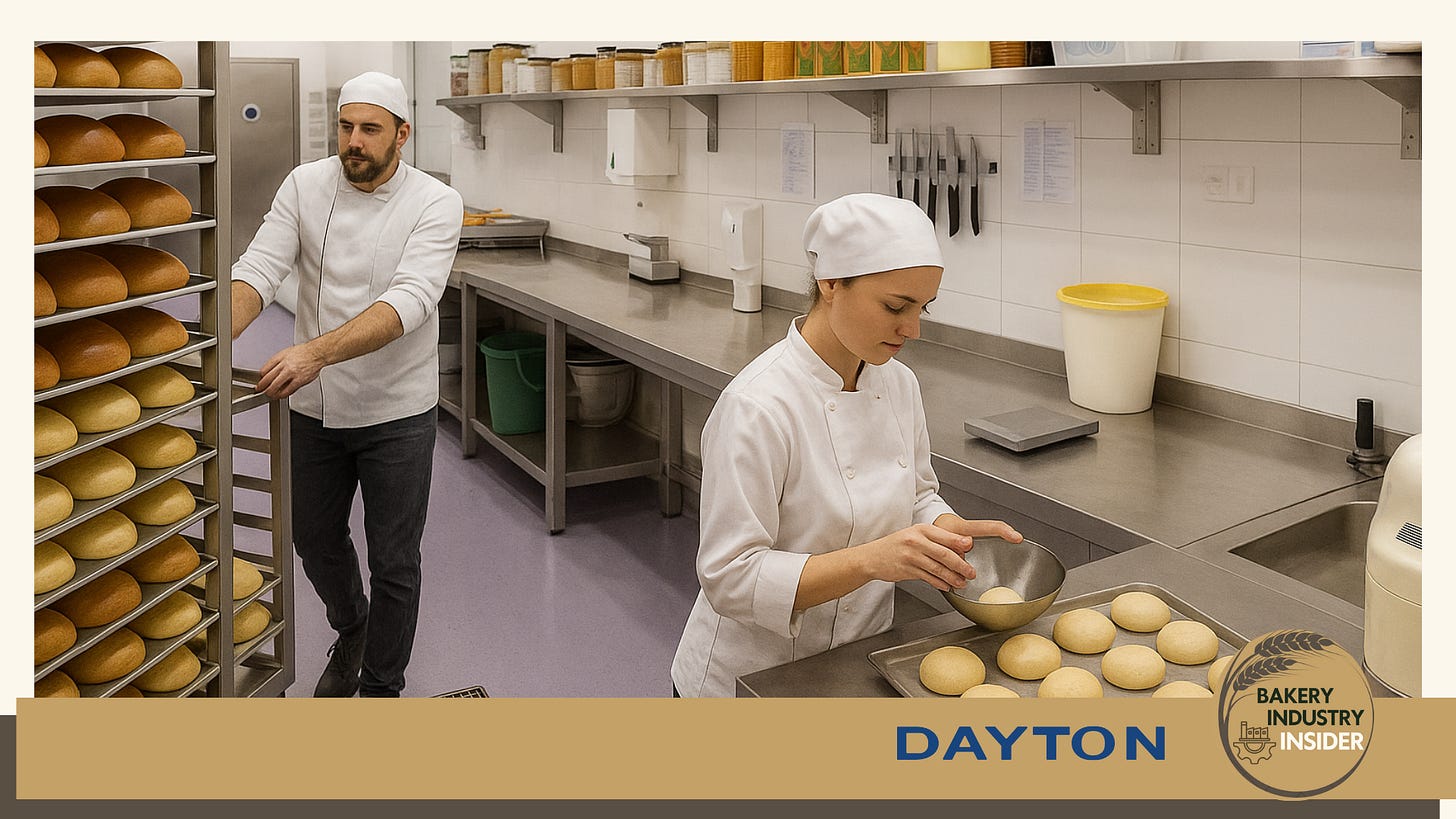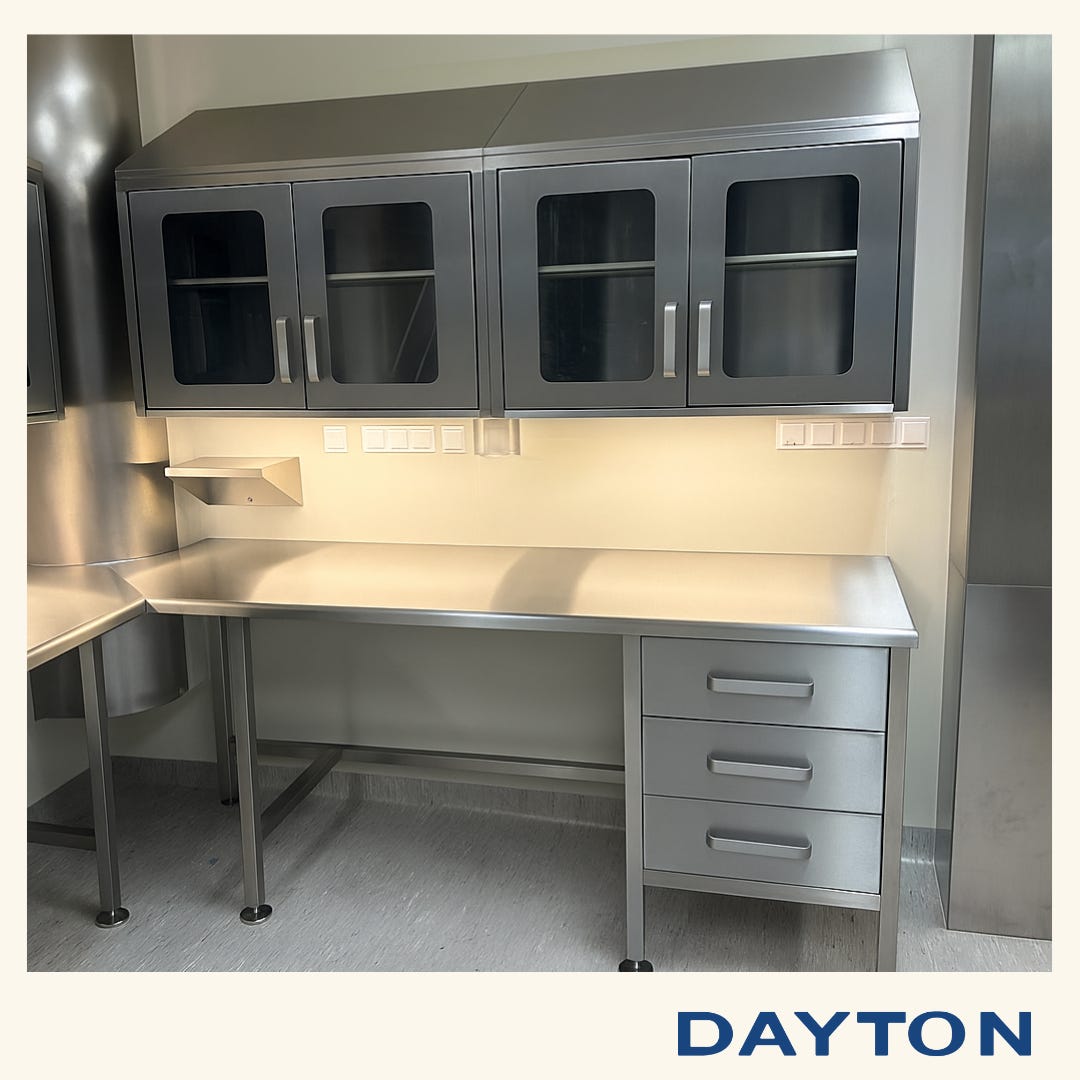How small changes in furniture can save you money and reduce production times
Although many industrial bakeries invest in state-of-the-art ovens, mixers, and conveyors, line efficiency is still affected by a less obvious factor: standard auxiliary furniture that does not adapt to the actual plant layout.
Where does efficiency begin?
At Bakery Industry Insider, we spoke with Živilė Adomonytė, Project Manager at Dayton UAB, about how improving productivity does not always require a major investment in machinery, but rather a redesign of the basics: workplace furniture.
“Regardless of how innovative the equipment may be, if the furniture is not adapted to it, production efficiency will never reach its full potential”, explains Zivile.
Problem: Dead angles and excessive cleaning times
In many baking lines, standard tables placed between the bowl lifter and the conveyor belt create inaccessible spaces or dead angles. Dough and flour accumulate there, forcing operators to move them manually or clean with extra tools. As Zivile points out, “this type of furniture ends up becoming an invisible bottleneck.”
Moreover, tables with sharp corners and screwed joints trap residues and require long, labor-intensive cleaning. This increases the risk of microbial growth and cross-contamination when switching to allergen-containing products.
Consequences include:
Increased waste due to dough stuck in inaccessible corners.
Extended downtime because of additional, complex cleaning steps.
Microbiological risk in edges and joints that retain moisture.
Cross-contamination when changing products.
Solution: custom-made furniture with hygienic and functional design
Redesigning furniture to fit the real layout and production flow can solve both problems simultaneously. Key solutions include:
L-shaped tables without dead angles, with internal radii ≥3 mm, closed panels, welded and passivated joints.
Custom-made washing stations with sloped drainage, anti-splash edges, overflow and wave-breakers, removable grids, accessible siphon, and rear protection to prevent residue drag.
Tangible benefits:
Smooth dough transfer without manual intervention.
Reduction of spills and ingredient losses.
Cleaning times reduced by 15–30%.
Lower risk of cross-contamination, directly impacting food safety.
Integration into the existing layout
The true differentiator is not buying “off-the-shelf” furniture, but designing and manufacturing it around the specific dimensions, flow, and processes of each plant. This approach eliminates inaccessible points and downtime.
Dayton UAB delivers this with custom-made furniture, engineered to fit seamlessly into every facility’s unique workflow.
The message is clear: small, strategic changes can deliver the biggest returns.
👉 Thanks for reading!
Dayton UAB in collaboration with Bakery Industry Insider
Contact Information:
Website: www.daytongroup.lt
Email: info@daytongroup.lt
Phone: +370 526 61000





hi
hope you're doing well
I need to know the standard total count of yeast in croissant.
exactly after Baking how much is the acceptable total count CFU.